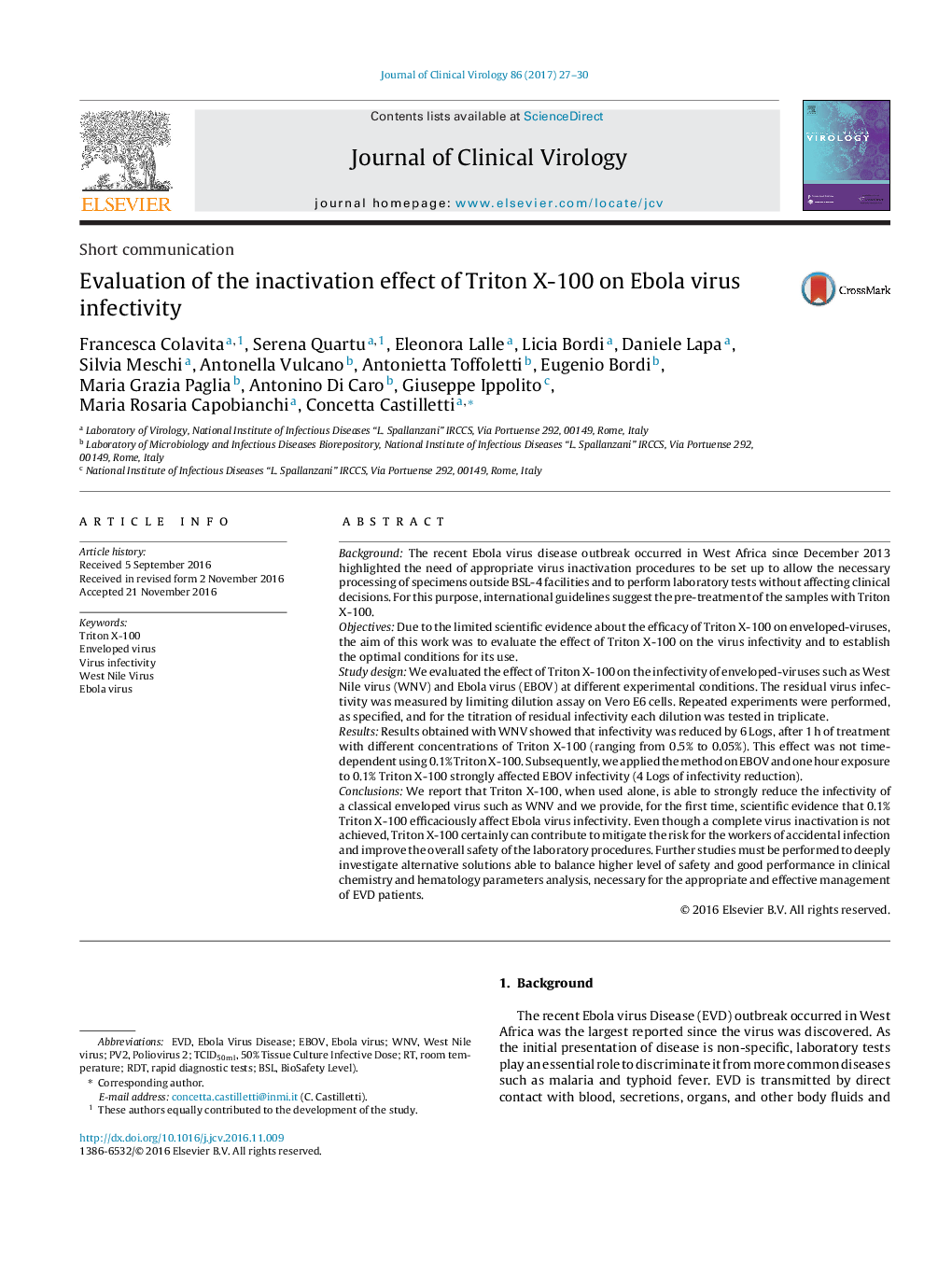| Article ID | Journal | Published Year | Pages | File Type |
|---|---|---|---|---|
| 5668027 | Journal of Clinical Virology | 2017 | 4 Pages |
â¢WNV infectivity was strongly reduced using Triton X-100 at different concentrations.â¢The effect on WNV infectivity was not time-dependent using 0.1% Triton X-100.â¢One hour exposure to 0.1% Triton X-100 strongly affected EBOV infectivity.
BackgroundThe recent Ebola virus disease outbreak occurred in West Africa since December 2013 highlighted the need of appropriate virus inactivation procedures to be set up to allow the necessary processing of specimens outside BSL-4 facilities and to perform laboratory tests without affecting clinical decisions. For this purpose, international guidelines suggest the pre-treatment of the samples with Triton X-100.ObjectivesDue to the limited scientific evidence about the efficacy of Triton X-100 on enveloped-viruses, the aim of this work was to evaluate the effect of Triton X-100 on the virus infectivity and to establish the optimal conditions for its use.Study designWe evaluated the effect of Triton X-100 on the infectivity of enveloped-viruses such as West Nile virus (WNV) and Ebola virus (EBOV) at different experimental conditions. The residual virus infectivity was measured by limiting dilution assay on Vero E6 cells. Repeated experiments were performed, as specified, and for the titration of residual infectivity each dilution was tested in triplicate.ResultsResults obtained with WNV showed that infectivity was reduced by 6 Logs, after 1Â h of treatment with different concentrations of Triton X-100 (ranging from 0.5% to 0.05%). This effect was not time-dependent using 0.1% Triton X-100. Subsequently, we applied the method on EBOV and one hour exposure to 0.1% Triton X-100 strongly affected EBOV infectivity (4 Logs of infectivity reduction).ConclusionsWe report that Triton X-100, when used alone, is able to strongly reduce the infectivity of a classical enveloped virus such as WNV and we provide, for the first time, scientific evidence that 0.1% Triton X-100 efficaciously affect Ebola virus infectivity. Even though a complete virus inactivation is not achieved, Triton X-100 certainly can contribute to mitigate the risk for the workers of accidental infection and improve the overall safety of the laboratory procedures. Further studies must be performed to deeply investigate alternative solutions able to balance higher level of safety and good performance in clinical chemistry and hematology parameters analysis, necessary for the appropriate and effective management of EVD patients.
